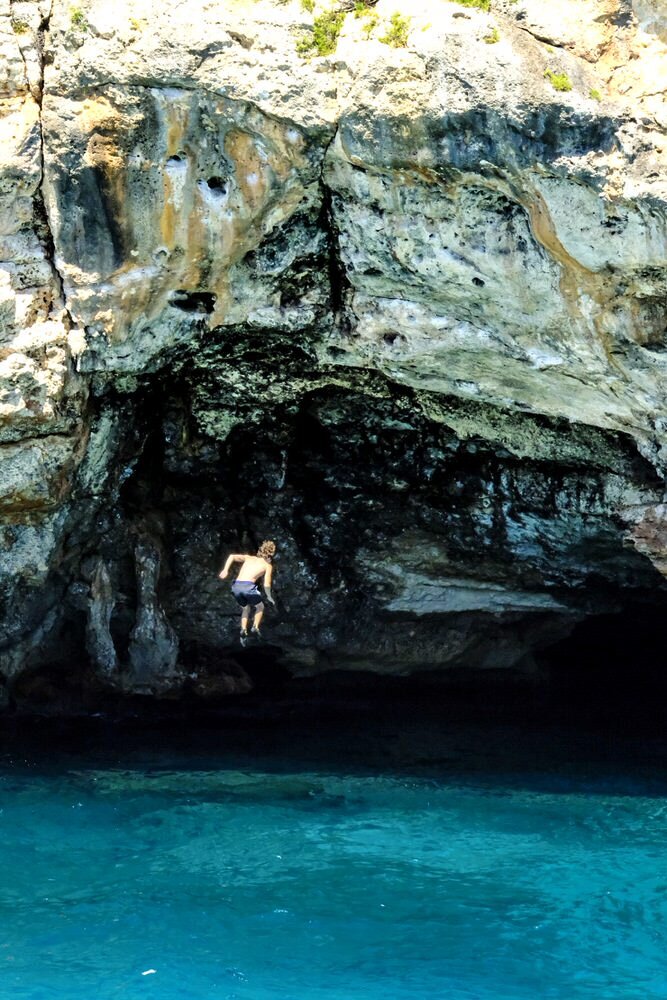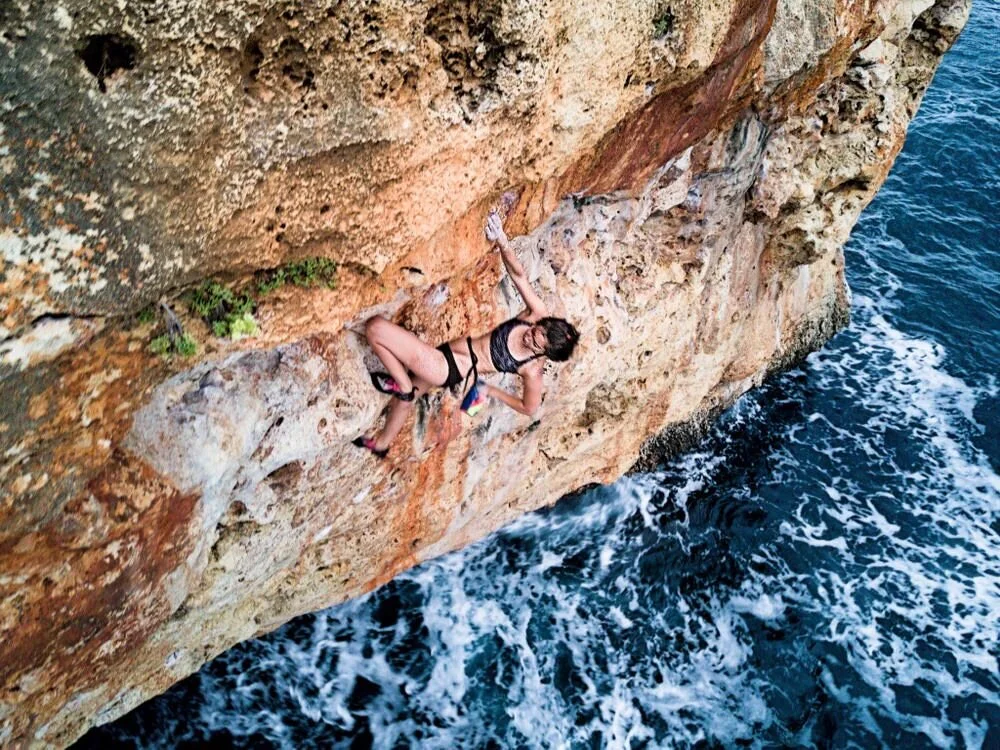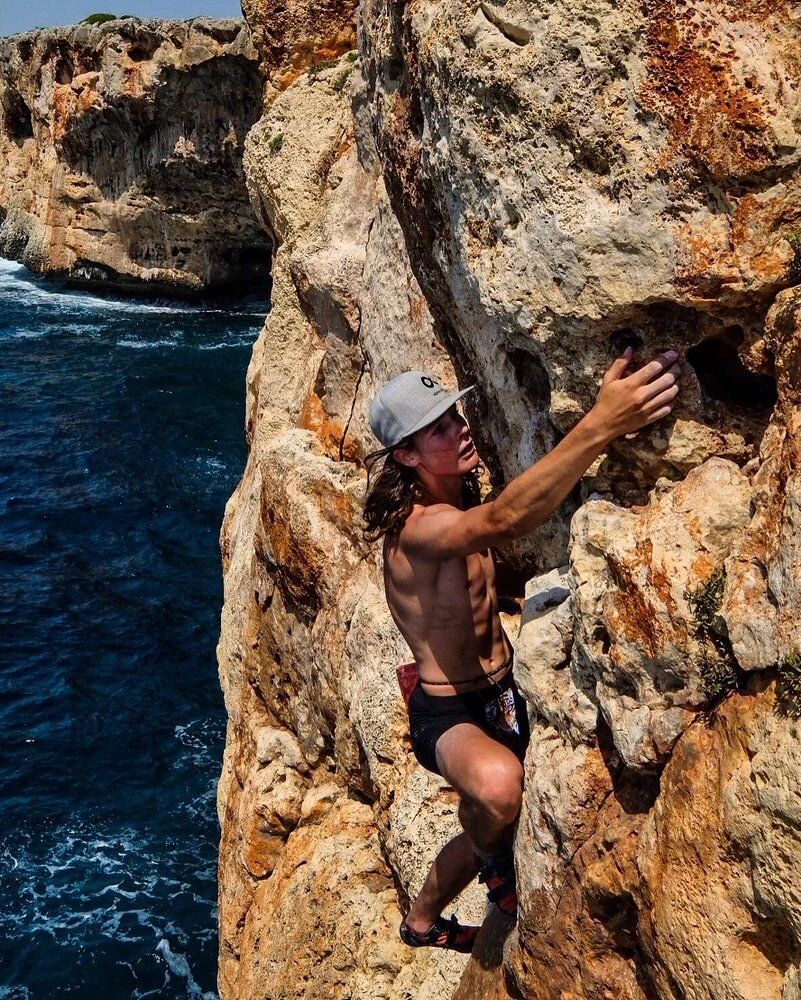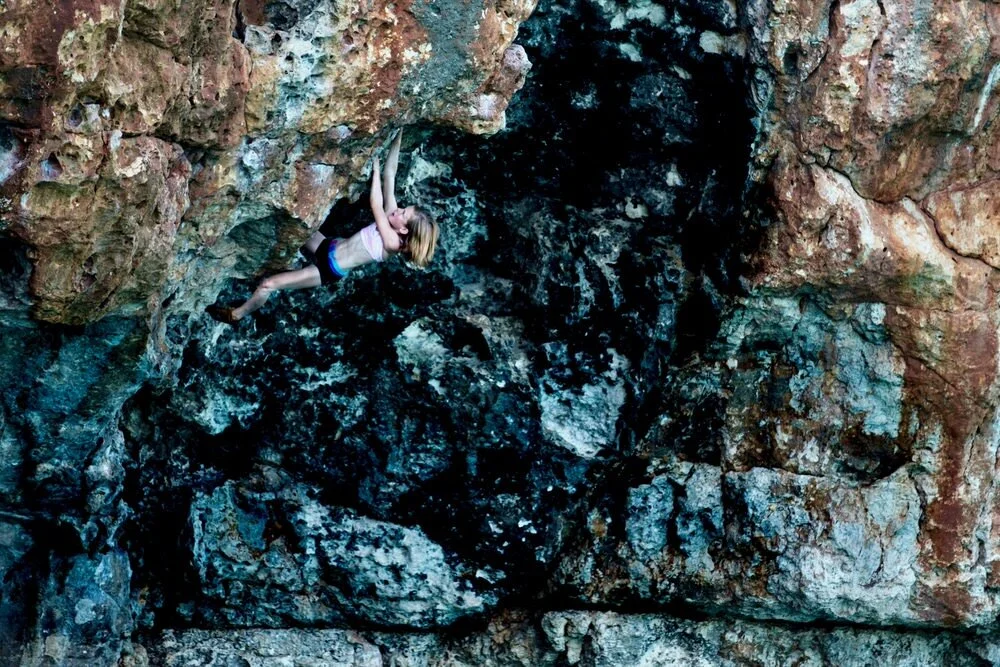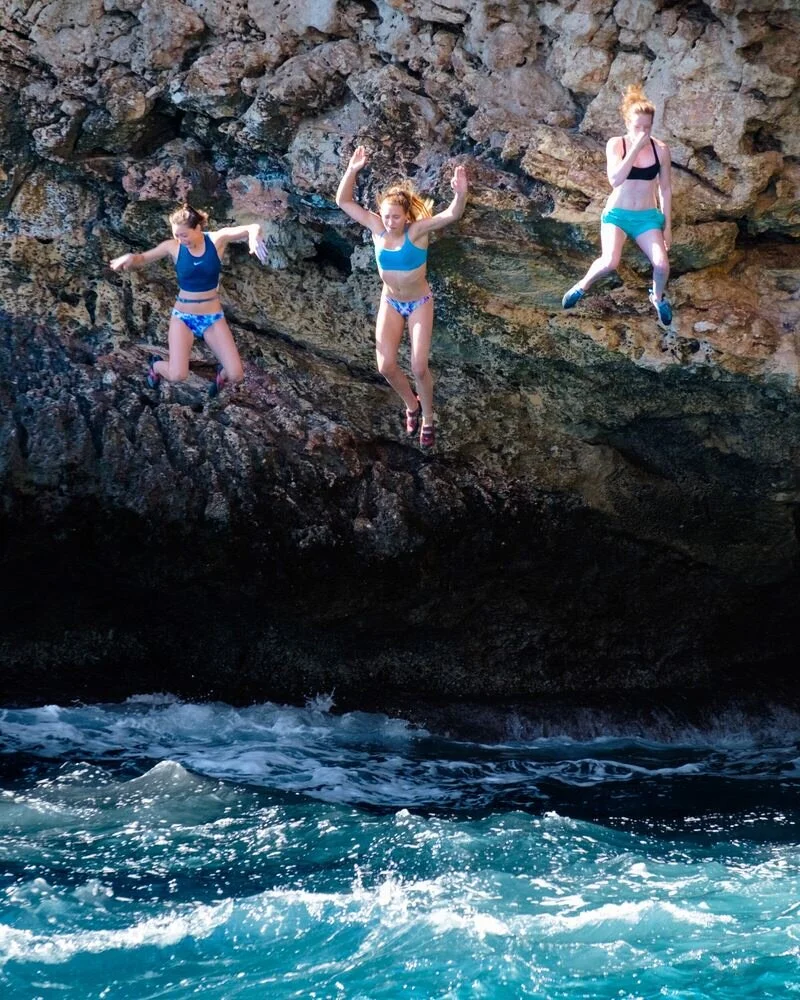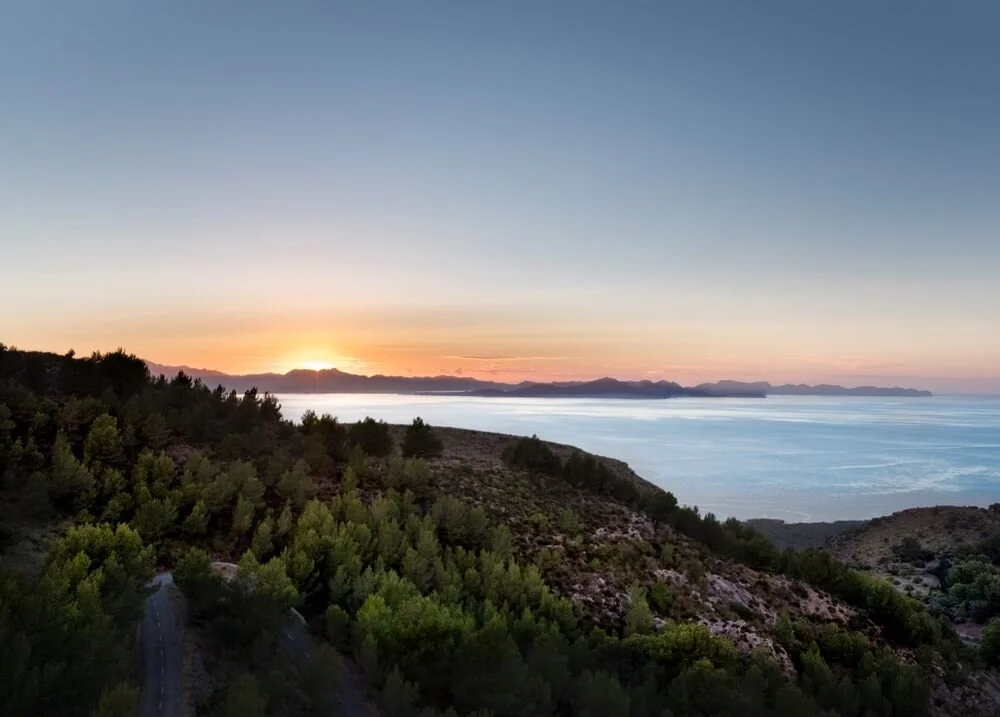Deep Water Soloing: Fear, Freedom, and Fun!
alpha climbing will visit Mallorca, Spain for two weeks of DWS and sport climbing in June 22-July 6, 2010. Two spots remain as of this post. Click here for details on the trip.
Deep water soloing (DWS) is a combination of fear, freedom, and fun. These elements continually weave in and out of the experience. Coincidentally, adolescents require fear, freedom, and fun to develop into well-adjusted adults. As a coach and mentor, I find that DWS offers my athletes an incredible experience to use their gym based training towards real-world adaptation.
FEAR - There’s no way to avoid fear while deep water soloing. It’s inevitable. Getting comfortable with the unknown elements of DWS involves a significant learning curve. Since it’s not possible to yell “take,” and sit back into the safety of the rope (and your belayer) a constant uncertainty — and sometimes, terror — is always present. You cannot escape the need for self control. You will either top out, climb back to the start, or take the plunge. You cannot press a pause button and walk away. You cannot get lowered. It is, for all intents and purposes, “free soloing.” In the truest sense of what this involves, you are free from any aid that might offer assistance to your ascent. As we develop as adolescents, learning to rely on our own skill and judgment can be terrifying. There is so much risk in the unknown, as we expose our vulnerability to judgement and consequence.
DWS puts our vulnerability as climbers and athletes directly in front of us, as well as directly above the open water. It’s on display for us come to terms with. The good thing is that it also gives us lots of ways to learn, and adapt. Most established DWS crags are loaded options: steep faces covered with humongous holds. Traverses that are barely above the water give us the option of moving without committing to a mega top-out. Being able to “test the waters” by falling (or jumping) in from low heights can gradually adapt our reflexes and train our fear response to lessen. For those with significant amount if fear, it’s completely reasonable to bite off small increases in height, difficulty, or commitment. All with the relative safety of a splash down into the warm waters of the Mediterranean.
There’s nothing irrational about being afraid. Climbing on steep rock about a bottomless sea comes with lots of unknowns, and plenty of risk. However, if we approach the experience with care and creativity, the risks can be mitigated and the rewards can be increased. It’s pretty much the same as what it’s like learning to be an adult.
FREEDOM - As previously mentioned, to climb free is to climb without aid or external assistance. While this might seem limiting, the necessary requirements of personal responsibility and decision making free climbing the purest form of climbing — just the climber and the rock. While in sport climbing, we use a safety system involving a rope, points of protection, and a belayer, to mitigate risk and limit injury; and in bouldering, we use pads to soften the fall and even the landing; but in DWS, these elements are removed, truly creating a free and natural environment. This forces the athlete to accept the need to make decisions that they are also completely accountable for.
One of the most difficult adjustments a youth makes in their journey to adulthood, is learning to make decisions, act accordingly, then accept the outcome. It’s called personal responsibility, and in many ways, defines what it means to be an adult. At the onset of adulthood, many of us are faced with the overwhelming task of making decisions in a world with endless possibility, unless we are immediately thrust into the reality of responsibility. This often means having lots of the basics taken care of, with limited direction in the form of orders, or being directly told what to do. It’s one of the many reasons so many young adults are utterly stifled by anxiety. So where are we to learn how to make decisions, when the weight of freedom can seem like an insurmountable challenge? Athletics is an obvious environment for youth and young adults. Since there is structure and rules usually in place, finding a path to a desired outcome is a little more corralled than just going it alone. We have training partners and competitors to bounce ideas and skills off of. We can learn about consequences for decisions in safe and controlled scenarios.
DWS takes developmental potential to a unique experience, by introducing a tremendous amount of freedom to the process. By developing skill and confidence to the training portion, then taking the step into personal freedom and responsibility in the self-actuation phase (actually being solo on the rock above the water), real growth can happen. It’s really quite brilliant to see happen, and it’s one of the main reasons I love mentoring.
FUN - Yes, I’m the coach who says that climbing isn’t always fun. I’m a 27 year veteran of climbing who forces himself to go to the gym when I don’t feel like it. I still get scared when I tie in for a hard onsight attempt. I do not think that the best climber in the world is the one having the most fun. I will openly say to a parent of a young climber that it’s okay for your child to struggle, to suffer, and to have to “force it” sometimes. We learn through struggle. Climbing teaches us so much while we suffer for it.
BUT…DWS is really fun. Despite the the FEAR and FREEDOM involved, what can be better than dangling around on big juggy holds about a brilliant blue sea in the hot summer sun? Bobbing around in the Mediterranean, living the island life — it is paradise and climbing is a direct connection to it. Working on finding a path to the rock’s rim with your teammates and the international crew of climbers is an exciting way to problem solve. The adrenaline rush gives us feelings of euphoria. Learning to believe in your own ability is empowering.
DWS is a powerful experience for the motivated climber. The fear, freedom, and fun involved make it a must-try adventure for any climber wishing to broaden their experience base.


